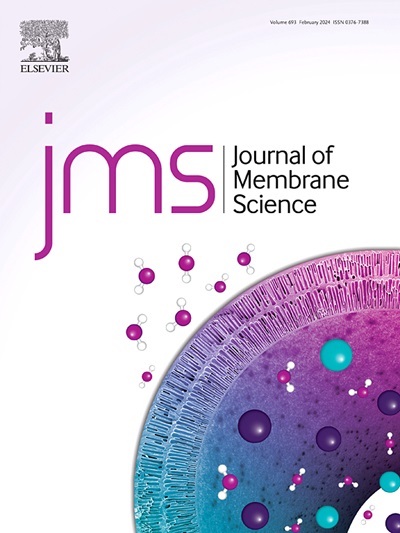Design and characterization of micro-nano cellulose fibers composite separators for sodium-ion batteries
IF 8.4
1区 工程技术
Q1 ENGINEERING, CHEMICAL
引用次数: 0
Abstract
Cellulose fibers characterized by low cost, well chemical stability and environmental friendliness, are a significant direction for sodium-ion batteries separator materials. However, the cellulose film is dense due to the hydrogen bonding between hydroxyl groups, corresponding to the low porosity, ionic conductivity and poor wettability to the electrolyte of sodium-ion batteries, which seriously limits application performance. A strategy to regulate the microstructure of cellulose films using micro-nano cellulose fiber composites is proposed in this thesis. Micro-cellulose fibers are extracted from cattail rods and nano-cellulose fibers are obtained from ordinary qualitative filter paper, respectively. Cellulose-based composite separators are synthesized by a conventional screening method and the influence of composite ratios on the separator behaviors is explored. The composite separator with micro-nano fibers mass ratio of 2:1 has a better overall performance, including porosity of 88.3 % and ionic conductivity of 0.63 × 10−3 S cm−1. The assembled Na3V2(PO4)3/Na half-cells deliver high cycle capacity retention rate of 97.0 % at 1 C after 500 cycles, rate capacity retention rate of 85.5 % at 10 C, as well as a small potential polarization and fine interface stability. These results provide alternative approach for the design of high-performance and low-cost cellulose-based separators for sodium-ion batteries.

钠离子电池用微纳纤维素纤维复合分离器的设计与表征
纤维素纤维具有成本低、化学稳定性好、环境友好等特点,是钠离子电池隔膜材料的重要发展方向。然而,纤维素膜由于羟基之间的氢键而致密,相应的孔隙率低,离子电导率低,对钠离子电池的电解液润湿性差,严重限制了应用性能。本文提出了一种利用微纳纤维素纤维复合材料调控纤维素膜微观结构的方法。从香蒲棒中提取微纤维素纤维,从普通的定性滤纸中提取纳米纤维素纤维。采用常规筛选方法合成了纤维素基复合隔膜,并探讨了复合配比对隔膜性能的影响。微纳纤维质量比为2:1的复合隔膜整体性能较好,孔隙率为88.3%,离子电导率为0.63 × 10−3 S cm−1。经过500次循环后,组装的Na3V2(PO4)3/Na半电池在1℃下的循环容量保持率高达97.0%,在10℃下的速率容量保持率为85.5%,并且具有较小的电位极化和良好的界面稳定性。这些结果为设计高性能和低成本的纤维素基钠离子电池分离器提供了另一种方法。
本文章由计算机程序翻译,如有差异,请以英文原文为准。
求助全文
约1分钟内获得全文
求助全文
来源期刊

Journal of Membrane Science
工程技术-高分子科学
CiteScore
17.10
自引率
17.90%
发文量
1031
审稿时长
2.5 months
期刊介绍:
The Journal of Membrane Science is a publication that focuses on membrane systems and is aimed at academic and industrial chemists, chemical engineers, materials scientists, and membranologists. It publishes original research and reviews on various aspects of membrane transport, membrane formation/structure, fouling, module/process design, and processes/applications. The journal primarily focuses on the structure, function, and performance of non-biological membranes but also includes papers that relate to biological membranes. The Journal of Membrane Science publishes Full Text Papers, State-of-the-Art Reviews, Letters to the Editor, and Perspectives.
 求助内容:
求助内容: 应助结果提醒方式:
应助结果提醒方式:


